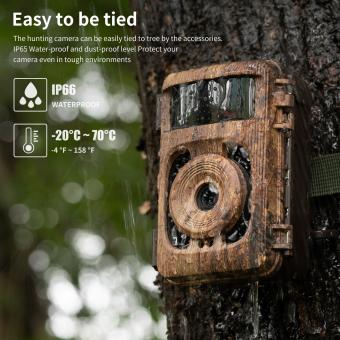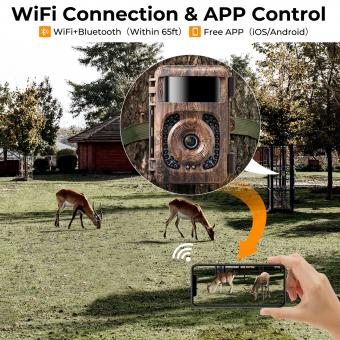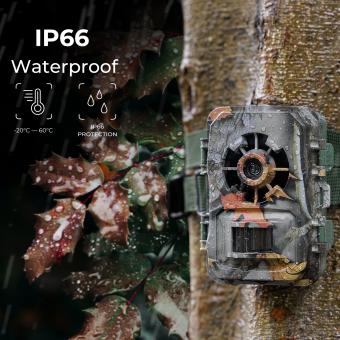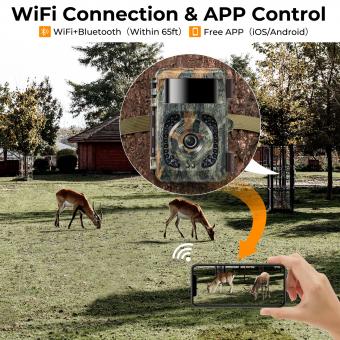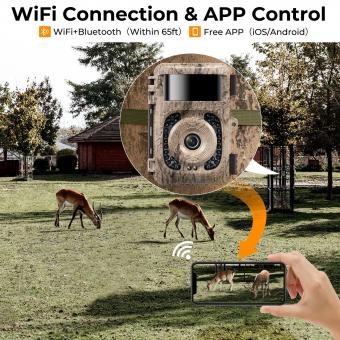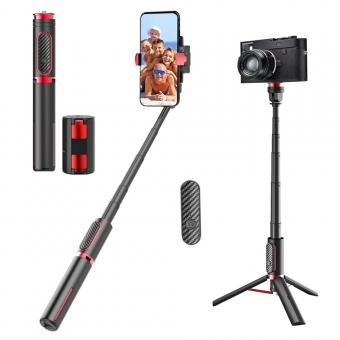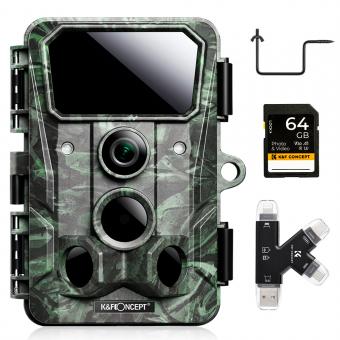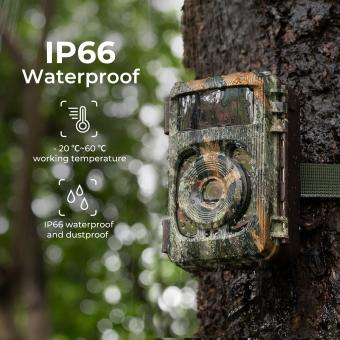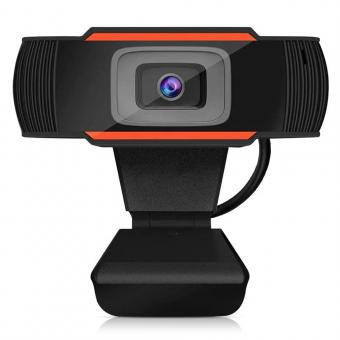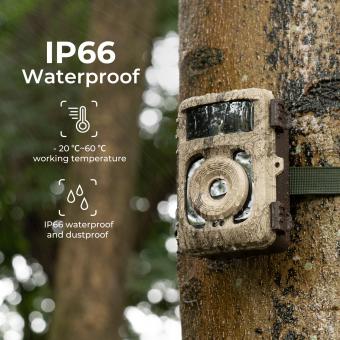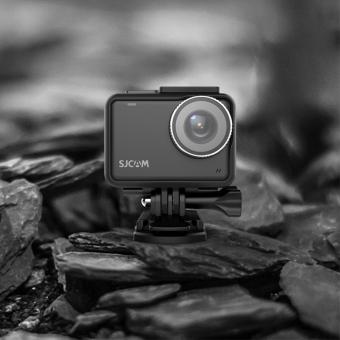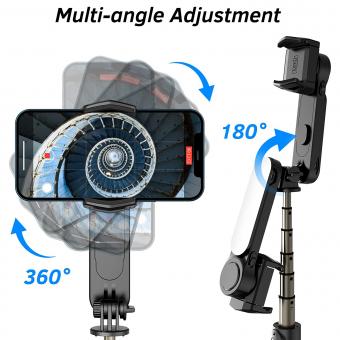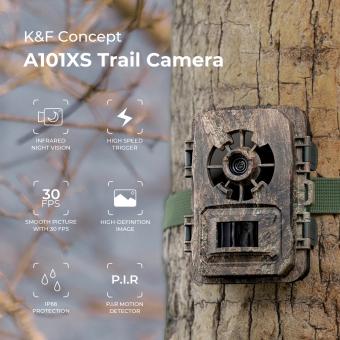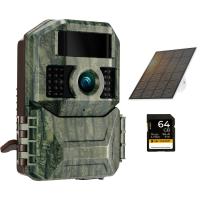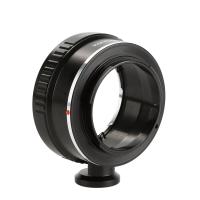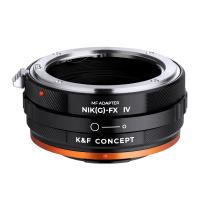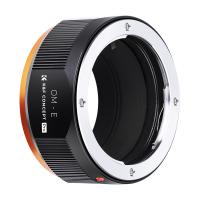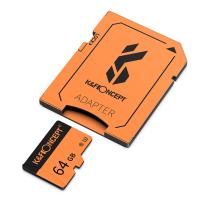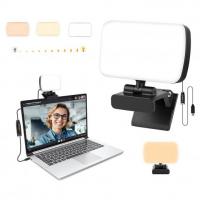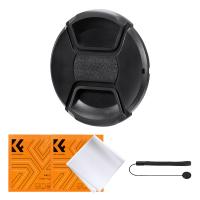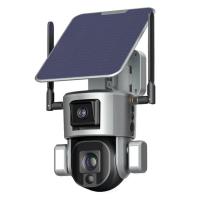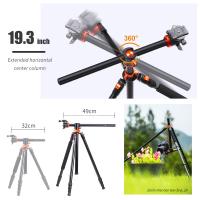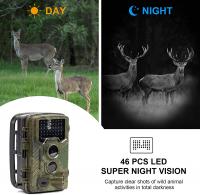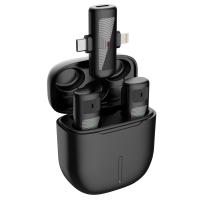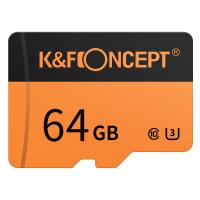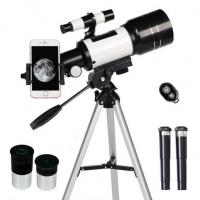Trail Cameras You Can Access From Your Phone?
In the age of digital connectivity, the ability to access and control devices remotely has become a significant convenience. One such device that has seen a surge in popularity due to this capability is the trail camera. Traditionally used by wildlife enthusiasts, hunters, and security personnel, trail cameras have evolved to include features that allow users to access them from their smartphones. This advancement has opened up a plethora of possibilities, making it easier to monitor wildlife, secure properties, and even conduct research. In this article, we will delve into the various aspects of trail cameras that can be accessed from your phone, exploring their features, benefits, and practical applications.
Understanding Trail Cameras with Smartphone Access
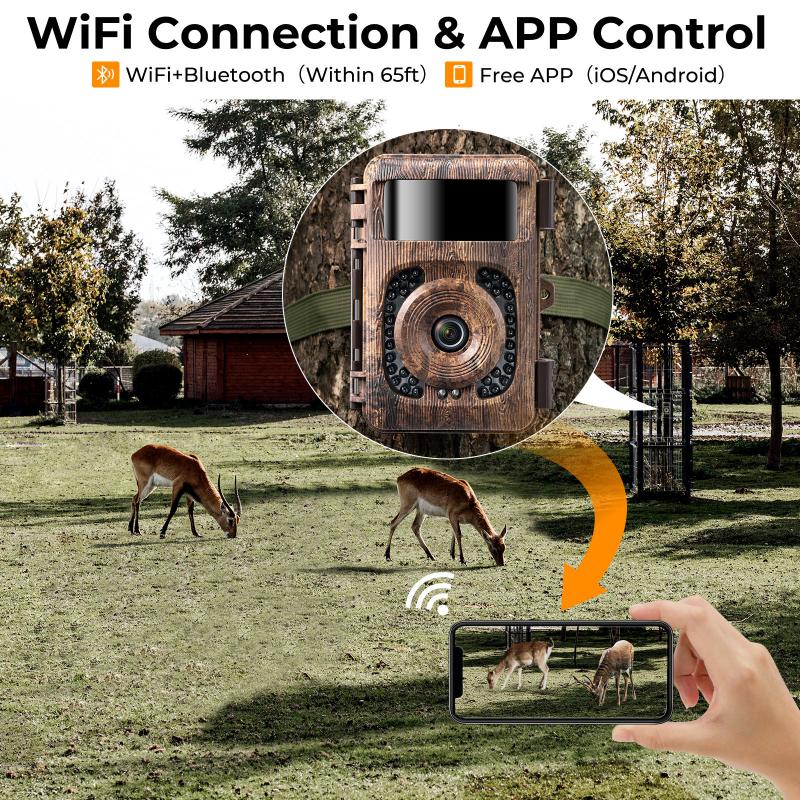
Trail cameras, also known as game cameras, are designed to capture images and videos of wildlife or any movement in a specific area. These cameras are typically rugged, weatherproof, and equipped with motion sensors to trigger the camera when movement is detected. The integration of smartphone access has revolutionized their functionality, allowing users to receive real-time updates, control settings, and view captured media remotely.
Key Features of Smartphone-Accessible Trail Cameras
1. Wireless Connectivity: The most crucial feature of these trail cameras is their ability to connect to a smartphone via Wi-Fi, Bluetooth, or cellular networks. This connectivity allows users to access the camera's feed and settings from virtually anywhere.
2. Real-Time Notifications: Users can receive instant alerts on their smartphones when the camera detects movement. This feature is particularly useful for security purposes and wildlife monitoring.
3. Remote Control: Through dedicated apps, users can adjust camera settings such as resolution, sensitivity, and shooting modes without needing to be physically present at the camera's location.
4. Live View: Some advanced models offer live streaming capabilities, enabling users to watch real-time footage directly on their smartphones.
5. Cloud Storage: Many smartphone-accessible trail cameras come with cloud storage options, ensuring that captured media is safely stored and easily accessible.
6. GPS Integration: For added convenience, some cameras include GPS functionality, allowing users to track the camera's location and receive geotagged images.
Benefits of Using Smartphone-Accessible Trail Cameras
The integration of smartphone access into trail cameras offers numerous advantages, making them a valuable tool for various applications.
Enhanced Convenience
One of the most significant benefits is the convenience of remote access. Users no longer need to physically retrieve the camera's SD card to view captured media. Instead, they can simply open an app on their smartphone to check the footage. This feature is particularly beneficial for cameras placed in hard-to-reach or remote locations.
Improved Security
For property owners, the ability to receive real-time notifications and view live footage can significantly enhance security. Whether it's monitoring a vacation home, a construction site, or a farm, users can quickly respond to any suspicious activity.
Wildlife Monitoring
Wildlife enthusiasts and researchers can greatly benefit from the remote access feature. It allows them to monitor animal behavior without disturbing the natural habitat. Additionally, the ability to adjust settings remotely means they can optimize the camera's performance based on the observed activity.
Data Management
With cloud storage and GPS integration, managing and organizing captured data becomes much more straightforward. Users can easily sort through images and videos, share them with others, and even analyze patterns based on geotagged data.
Practical Applications of Smartphone-Accessible Trail Cameras
The versatility of these trail cameras makes them suitable for a wide range of applications. Here are some practical scenarios where they can be effectively utilized:
Wildlife Research and Conservation
Researchers and conservationists can use these cameras to study wildlife behavior, track animal movements, and monitor endangered species. The ability to access the camera remotely ensures minimal human interference, providing more accurate data.
Hunting
Hunters can use trail cameras to scout game and plan their hunting strategies. Real-time notifications and live view features allow them to monitor game activity and make informed decisions on the go.
Home and Property Security
Homeowners can use these cameras to keep an eye on their property, especially in areas that are not easily visible from the house. The instant alerts and live streaming capabilities provide peace of mind and a quick response to potential threats.
Farm and Livestock Monitoring
Farmers can use trail cameras to monitor livestock, check for predators, and ensure the safety of their animals. The remote access feature allows them to keep an eye on their farm even when they are not physically present.
Outdoor Recreation
For outdoor enthusiasts, these cameras can be used to capture the beauty of nature, document hiking trails, and even ensure safety by monitoring remote campsites.
Choosing the Right Trail Camera
When selecting a trail camera that can be accessed from your phone, there are several factors to consider to ensure you get the best device for your needs.
Connectivity Options
Determine whether you need a camera with Wi-Fi, Bluetooth, or cellular connectivity. Cellular cameras offer the most flexibility as they can be accessed from anywhere with a mobile signal, but they may require a data plan.
Image and Video Quality
Look for cameras with high-resolution sensors to ensure clear and detailed images and videos. Some cameras also offer night vision capabilities, which can be crucial for nighttime monitoring.
Battery Life
Since trail cameras are often placed in remote locations, battery life is a critical factor. Opt for cameras with long battery life or those that support external power sources like solar panels.
App Functionality
The accompanying app should be user-friendly and offer comprehensive control over the camera's settings. Check for features like live view, remote control, and cloud storage integration.
Durability
Ensure the camera is built to withstand harsh weather conditions and rough handling. Look for features like waterproofing, dust resistance, and robust construction.
Trail cameras that can be accessed from your phone have transformed the way we monitor wildlife, secure properties, and conduct research. Their convenience, enhanced security features, and versatility make them an invaluable tool for various applications. By understanding the key features and benefits, and considering the practical applications, you can make an informed decision when choosing the right trail camera for your needs. Whether you're a wildlife enthusiast, a hunter, a property owner, or a researcher, these advanced trail cameras offer a seamless and efficient way to stay connected and informed.

